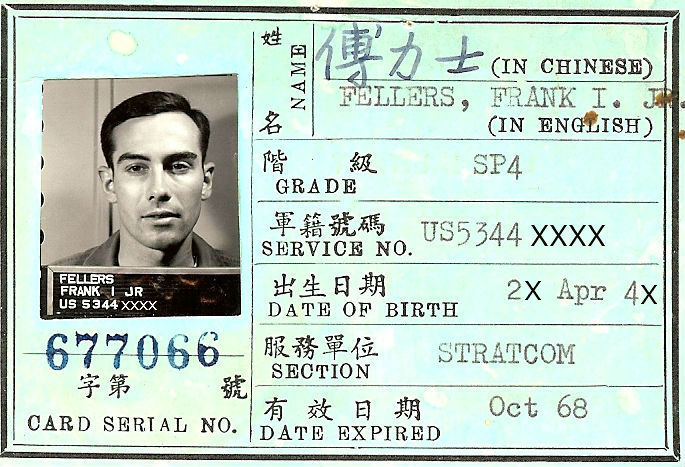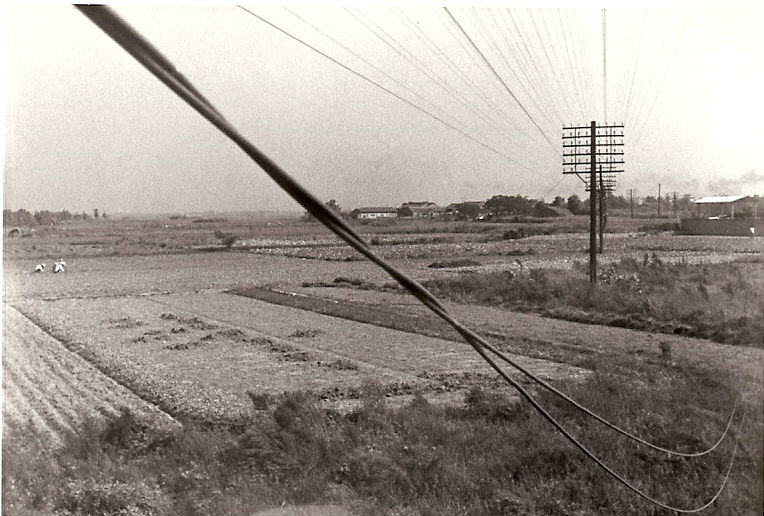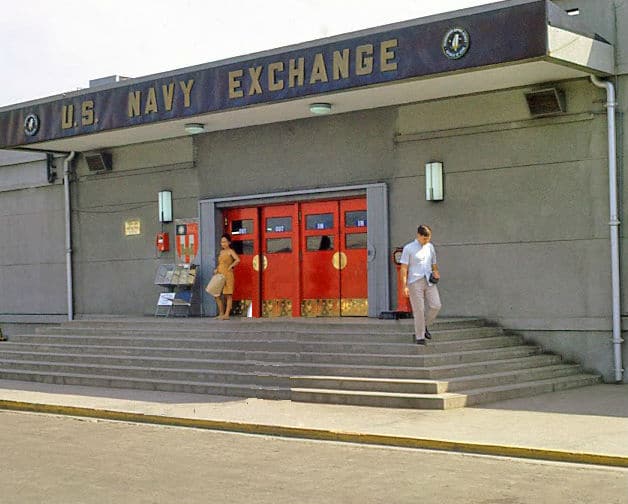
STRATCOM / ROC ID Card

Cable Route to Linkou Air Station
Home Away From Home
While you are browsing this page I invite you to click on the player below and listen to this song. Its called Sukiyaki, by Kyu Sakamoto. And yes, I know it is Japanese, not Chinese. But during the time I spent in Taipei, no matter what bar or club you might be in, I guarantee somebody would play it. So, for me it will always be tied to my memories of Taipei.
Sukiyaki
I was assigned to Fort Bragg, NC for basic training. My first morning in the Army was spent taking a group of aptitude tests. The saying was that when you were drafted, “if you were a mechanic the Army would assign you to be a cook, and if you were a cook you would be assigned as a mechanic”. While there was probably some truth to this, in my case it was not. I had worked for the telephone company (AT&T) before being drafted and I was assigned to the Signal Corps upon completion of basic training.
In April of 1967 I had finished all my training and was stationed at Ft. Bliss, in El Paso, Texas. I was assigned to what was referred to as a “holding company”. Basically it was an assignment to keep you busy while you awaited orders for a permanent duty station assignment. Everybody in the company was waiting on orders to go overseas, probably Vietnam. One day I finally received my orders, to STRATCOM APO (Army Post Office) 96263. I had no Idea where it was, nor did anyone else in the company. So I went over to the base Post Office and asked where it was and they said Taiwan. Well, I still didn’t know where it was, so I went over to the library to try to find a map to see where the heck I was going! After a little research I finally discovered that Taiwan was the new name for Formosa, an island off the coast of China. I had accumulated around two weeks leave so I went back home before reporting to Fort Lewis, WA for transfer to my new duty station.
Outside, what is that SMELL? That first time really catches you by surprise, nothing quite like it. A little time passes and a grey Navy vehicle shows up with a Chinese driver and he tells us to get in. We are driven to the Headquarters Support Activity (HSA) East Compound on Chung Shan North Road and put up in the Enlisted Men’s barracks. On the way into the compound, the driver points to the STRATCOM Operations Battalion admin building and tells me to report there the next morning.

I continued to live in the barracks for a few day while I was processing into the new unit. This was by choice since as long as I lived in the barracks I could eat in the FASD Mess Hall located in the Signal Compound
Since the hostel was not within the military compounds nor operated by the US military I qualified for a housing allowance and seperate rations. The extra money from the housing allowance paid for the base cost of the hostel. The seperate rations allowance meant that I could no longer eat in the mess hall but had to purchase my own meals. Some times, it could be rather hard to streach the money to the end of the month. There was a snack bar with a limited menu at the rear corner of the entrance lobby. You could go to the desk in the lobby and get a “Chit Book” that could be used to pay in the snack bar. The value of the chit book then had to be paid along with the rent at the end of the month.
I assumed that Schen had served in the Nationalist Chinese (ROC) military. Schen took care of the laundry, shined boots and shoes, and cleaned the room. I think the house boys were responsible for 8-10 rooms each. I received a housing allowance ($72 I think) that covered the cost of the hostel room. There was an additional charge for electricity if you had an air conditioner. I also had to pay Schen each month for his services.
Notice the piece of furniture to the right of the tape recorder. That is one of a pair of stereo speaker enclosures I had built by Ricardo Lynn Furniture. They also made the turntable base and cover. You could take them a photo or sketch of whatever you wanted and they would build it for you. And the prices were very reasonable! Most of the GI’s that were accompanied by their familys ended up with one or more pieces of furniture made by Ricardo Lynn.
This photo must have been taken a few months before I left, notice the “short timers” calendar sitting on the headboard with the days marked off! It was considered poor form to have a short timers calendar until your time left in country got down to two digits.
You may have noticed that both Frank and I had tape recorders. A lot of the GI’s had them. You could buy records from local vendors at incredibly cheap prices. As soon as a new record showed up in the PX, within a few days copies would be available. While they were inexpensive, they were not durable. They were made from brightly colored, translucent plastic. So the procedure was, the first time you played the record, you recorded it to tape and there after used the taped copy. It had the added benefit of being able to take the tapes back to the US, while we were not allowed to take the records back since they were pirated copies.
I was assigned to the Taipei Military telephone system. Everybody just called it “Taipei Military”. The unit was part of STRATCOM Long Lines Battalion, based at Grass Mountain, in the mountains outside of Taipei. They operated the Joint Over Seas Switchboard (JOSS) which served various sites in the Pacific. But since the telephone exchange was located in the Sugar Building in downtown Taipei the unit was assigned to STRATCOM Operations Battalion, with headquarters at the rear of the HSA East Compound (sometimes called the Signal Compound). We provided telephone service for everybody in the Taipei area that had anything to do with the US, including all branches of the military, Military Assistance Advisory Group (MAAG), and various embassies. If, when you picked up your phone and dialed Operator, a Chinese voice said “Taipei Military” that was one of our phones. While most other GI’s worked inside one of many sites in the Taipei area, we worked all around the greater Taipei area: East and West HSA compounds, Linkou, Sung Shan Airport, various MAAG compounds, Grass Mountain, Tien Mu, as well as the cable routes connecting the various sites. We spent most of our time out on the cable routes, working among the civilian population.
Mitch’s wife was in country with him. I remember we were having a going away party for them when we heard the news about the USS Pueblo being captured by the North Koreans. Mitch and his wife had already packed up all their household belongings and he was concerned he would be extended, but it worked out that they got to go back to “the world” as scheduled.
Linkou was an intelligence site. There was a forest of antennas for picking up and translating radio broadcasts from mainland China. The guys that worked there would never say what they were doing but it didn’t take a rocket scientist to figure what all the antennas were for.
When Frank gave me this photo he said it was one of the operators. I had to take his word for it, since I was rarely at the Sugar Building. The operators would act as a dispatch service for us. Remember, this was a time before pagers or cell phones. We didn’t even have two way radios.
The switch room techs would take the trouble reports and pass the information on to the operators. When we called in, they would let us know what troubles we had and who to contact. If it was your week to be on call, every where you went, you had to call the switch board and leave a number where you could be contacted.
In the picture to the left, the building with the red vertical sign is the First Company Department store. If you look closely behind it you can see a much shorter building (4 or 5 stories) extending to the left, that is the Sugar Building. The photo on the right is a another view of the First Company with the corner of the Sugar Building visible on the left side of the image. During my assignment, the First Company was the only “department store” that I was aware of in Taipei.
There were also several theaters in the area. Many of the movies shown were from studios is the US but had Mandarin sub-titles. It made for an interesting experience watching them!
Quite often, when we would be returning to the motor pool in the afternoons, we would encounter a large group of young children on Linsen Road, at the intersection of Minquan Road. The sidewalks and intersection would be full of young children in all directions, wearing what I assumed were school uniforms. It was my understanding that there was a school located nearby.
There is an old saying “you can never go home again”. The Taipei I lived in for almost a year and a half no longer exists. In it’s place has risen a modern metropolis. Not far from where I watched a multi-story building being constructed using bamboo scaffolding and materials delivered on pedicarts now stands Taipei 101, one of the tallest buildings in the world! Pedicabs have given way to a modern mass transit system and high speed trains extend to most areas of the island nation. The largely agricultural economy has been replaced by an economic giant, with heavy emphasis on manufacturing and electronics. I hope to return to see the many changes that have taken place.
































Great piece! I was Air Force stationed at Shu Lin Kou A.S. during its last days (75-77). What you described during your tour was pretty much the way it was during my tour. It was a great opportunity for a young man and still can’t believe my luck at being stationed in Taiwan.
It’s true that you can’t go home again but stories like yours help keep the memories alive.
I was stationed in Taipei from July 1973 and November 1976. I worked in navy personnel the first half of my tour and the radio station on Grass Mountain my second half of my tour. I arrived in Taipei as an E-5 with only my seabag and left as an E-6 with a wife, a year old daughter and 7,000 pounds of furniture. One of my best duty stations in my 20 years career in the navy. A very good job with your website.
John,
I am YN3 Bob Carter, I worked for you at HSA Taipei, then you were my Detailer that gave me orders out of Taiwan in 1977. I live in San Diego and retired as a YN1, after 20 years of service. After the Navy I was a high school teacher/varsity football coach for 21 years. I am now retired and a volunteer onboard the USS MIDWAY museum in San Diego.
Bob, I worked with you in the HSA Admin Office. I was a YN2 (or maybe 3 when you got there) Curt Vaughan. I think you were the numerical relief for YN2 Henry (Mitch) Mitchell. I don’t think we worked together very long. I remember you had to have knee surgery and you were gone for a while. I remember you had a wife and (I think) a daughter. The others in the office were YNC Smith, YN1 Kennedy, and a female YNSN (I think her name was Smith but I’m not sure). We worked for LT Maryann Weinwuth. I got selected for NESEP and left in April 1977. I live in the Phoenix area now. It was the best tour of my 25 years in the Navy. Loved it!
Hi Curt, I am sending you Bob’s e-mail address so you can contact him directly.
hey I have so much respect for you rick and will never go into the army. I thank you for serving our country and everyone else who has as well. Fight on!!!!!!!!!!!!!!!!!!!!!!
Great site! Many memories! Bill Paden here, USA STRATCOM Division, Grass Mountain in 31J, teletype repair. Stationed there 1967 thru 1969. Many Memories made there.
Bill
Did you know a John Chappa he was TTY repair man
I don’t think so. I don’t recognize the name. I believe that the TTY people worked up on Grass Mountain mostly. I met a few of them but I don’t remember any names.
Hey Marvin; Been many years now since Grass Mountain. John Cappa sounds very very familiar to me. Were you stationed on Grass Mountain? Bill Paden
Bill I have some question . I tried to e-mail you though Kent at Taipei Air Station Blog ,Kent sent to your e-mail address that he had but was returned . If you contact Kent he will give you my e-mail address . To answer your question about station on Grass Mountain , yes for a few weeks before being sent to Tsoying
Hello Marvin; Tried twice to send you an email. Do not know if you got it or not. Let me know. Email; bill.paden@att.net
Hey Marvin; Sent you two emails, no reply. Did you get them?
Bill Paden. bill.paden@att.net
Hi Fellers,Happy Chinese New Year.May you have nice year in2018.
Mr. Con, my wife and I wish you and your family a Happy New Year as well. We hope all of you will be healthy and prosperous.
It was a pleasure to meet you during our vacation in Taiwan. We both thoroughly enjoyed our tour of Kaohsiung.
Best Wishes,
Rick
Greetings Rick,
Great site! I enjoyed reading every word, and the pictures were a huge plus. My service (’69-’71) was stateside, but I came to Taiwan for six months in 1988 — and have been here, more or less, ever since.
Best wishes
I served on Grass Mtn.
My NCOIC SFC ROSSI (KIA Vietnam ) Shift Supervisor Sgt Gibbs
I worked in RUAGST major relay as a tape ape 72B.
My name IS Sgt Moreno 67-71. SP5 Bob Schaffer,
and SGT Bernard Cabebe
were part the group of tape apes , later worked in NARC, then was Admin Clerk until I left. Great Memeories of Grass MTN